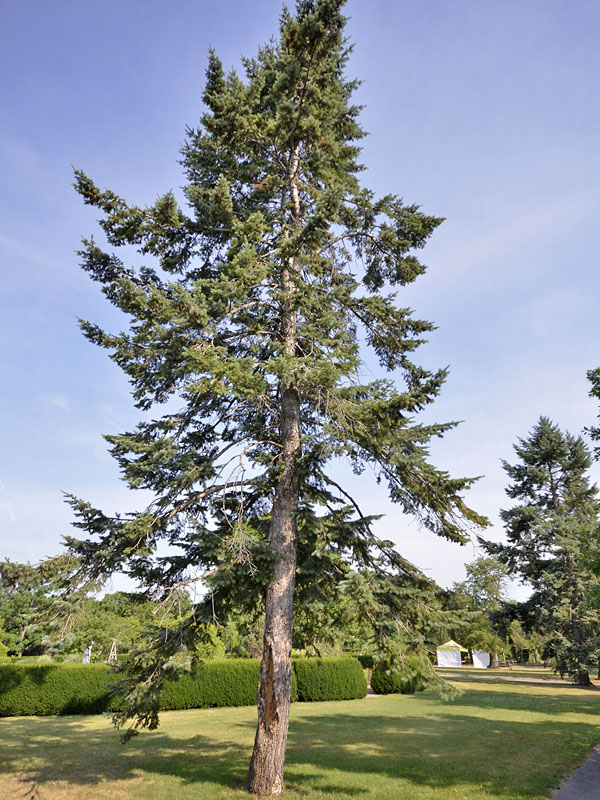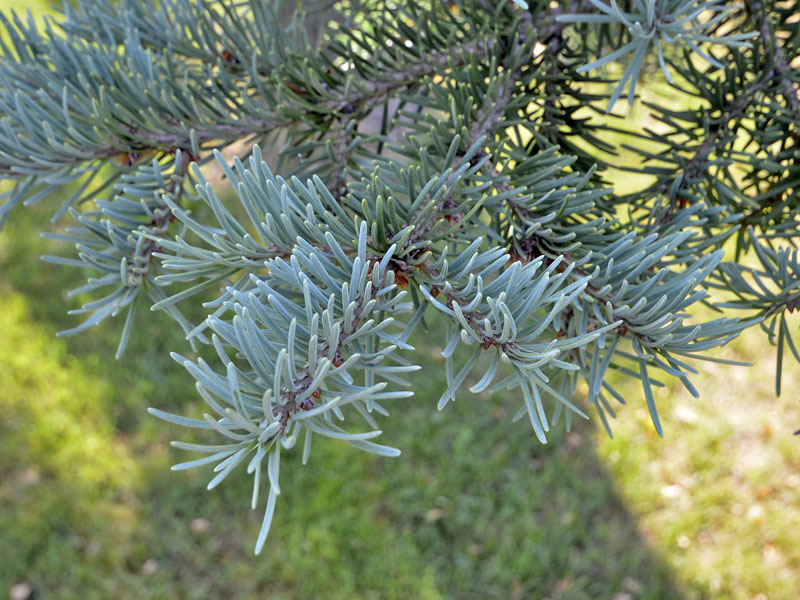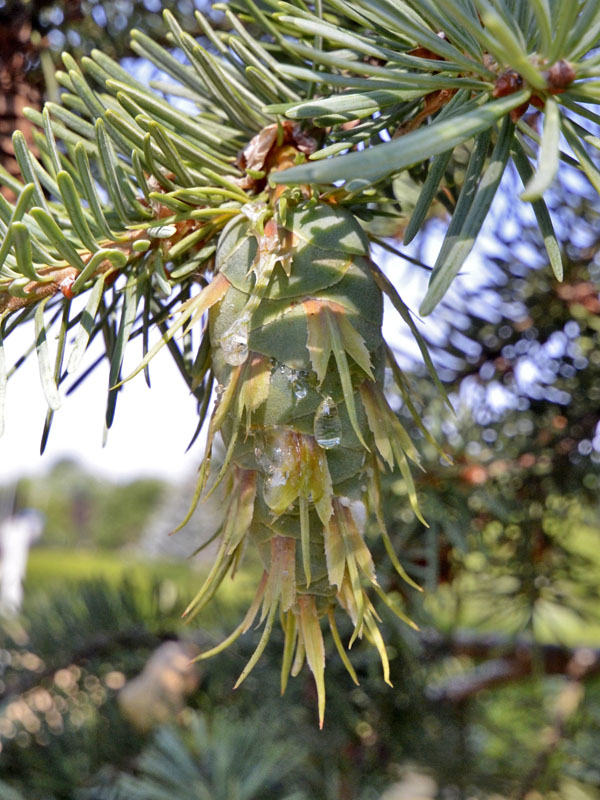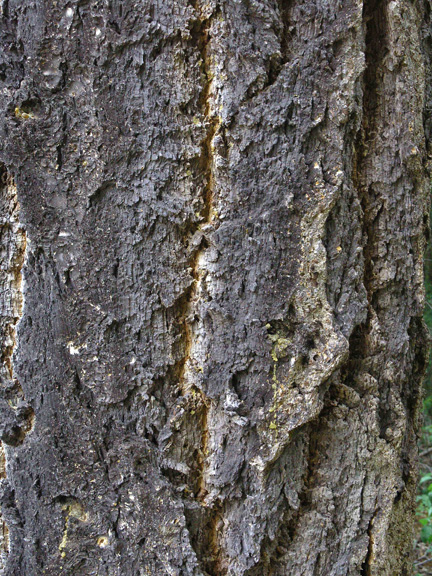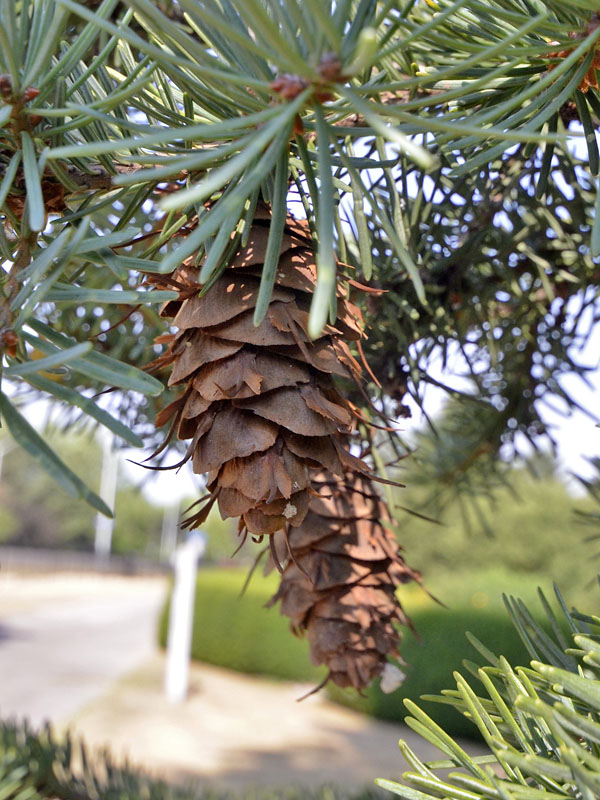| General Description | Twigs are brown to grey, smooth, finely pubescent with scattered short hairs. |
| ID Characteristic | Alternate and simple leaf with a blue to blue green colour and a filiform needle-like shape. |
| Shape | Symmetrically pyramidal with a moderate crown density. |
| Landscape | Very ornamental under cultivation, an excellent specimen suited to grouping or mass planting. It also makes an excellent short needled Christmas tree. |
| Propagation | Seeds will germinate without pretreatment although success may very with the seed source. |
| Cultivation | Start seeds outdoors in containers in spring. Pseudotsuga menziesii thrives in full sun and is intolerant of shade. It likes a moist but well-drained soil with a pH between 3.7 and 6.5. Douglas Fir is not tolerant of dry soil. It has a moderate to fast growth rate. It tolerates pruning and shearing, and should be protected from exposure to strong winds for the best appearance. |
| Pests | Aphids infestations on small trees may be dislodged with a strong stream of water from the garden hose. Scale and bark beetles may infest Douglas-Fir, especially those under stress. Root rot can be a serious problem on clay and other wet soils. Needl |
| Notable Specimens | Niagara Parks Botanical Gardens. |
| Habitat | Mountains ranging from 600m altitude up to 300m |
| Bark/Stem Description | Bark on young trees is thin, smooth grey and covered with resin blisters while on mature trees it is moderately thicker, furrowed and corky. |
| Flower/Leaf Bud Description | Distinctive narrow conically shaped buds, 3-6 cm long. |
| Leaf Description | Short needles that are spirally arranged slightly twisted at base covered in a light bloom. |
| Flower Description | Pollen cones are typically restricted to or more abundant on lower branches. Pollen cones develop over 1 year with the pollen being wind-dispersed pollen is released for several weeks in the spring. |
| Fruit Description | Cones are pendulous, oval-ovoid, 9.5cm - 10.5cm long by 4.8cm to 6.5cm broad, with 3 pronged bracts between the scales. Cones are light brown in colour. |
| Colour Description | Foliage typically a bluish-green. |
| Texture Description | A medium textured tree. |
